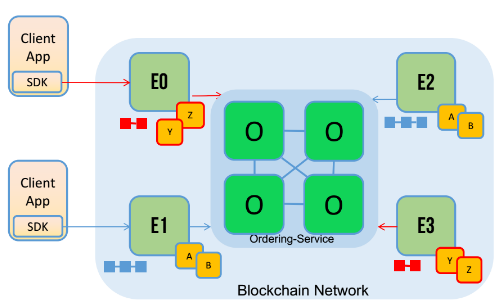
March 05, 2025
Building a Private Blockchain Network with Hyperledger Fabric
Have you thought about how organizations can safely exchange data on public networks? There is a way out of private blockchains. Private blockchains provide more privacy, control, and scalability than Bitcoin and Ethereum. One of the best private network frameworks is Hyperledger Fabric. Hyperledger Fabric lets organizations customize blockchains with its modular design, customisable functionality, and enterprise-grade security. This article will help you build up a private blockchain network and implement smart contracts using Hyperledger Fabric.
What is Hyperledger Fabric?
Hyperledger Fabric is an enterprise-focused open-source blockchain framework. This permissioned network has trusted members, unlike public blockchains. Hyperledger Fabric's flexibility allows organizations to customize blockchain solutions. Peers, orderers, channels, and "chaincode" smart contracts matter.
Its consensus method distinguishes Hyperledger Fabric. For network security, Hyperledger Fabric employs pluggable consensus techniques, unlike public blockchains. Framework's Membership Service Provider manages membership data. Only authorized users may join the network, protecting crucial data.
Setting Up the Hyperledger Fabric Network
Building a blockchain network requires many steps. To manage containers and chaincode, you need Node.js, Go, Docker, and Docker Compose. After environment setup, now install Hyperledger Fabric binaries and Docker images to create the network.
Install Hyperledger Fabric's Dependencies:
Next, go to the official site and get Hyperledger Fabric's source code and its images.
Setup the Network:
Hyperledger Fabric uses a sample network for easy setup. Docker Compose clones the sample repository and starts the network. In the network, two peer firms and an ordering service are typical.
Create Channels, Peers, and Orderers:
Channels are private subnetworks of the blockchain network that allow only approved transactions. You must set up and link the channel to peers and orderers. Peers validate transactions, whereas orderers maintain block consensus and ordering.
After setting up the network, you may deploy and interact with smart contracts.
Deploying Smart Contracts
Smart contracts (Hyperledger Fabric "chaincode") power blockchain applications. They define participant transactions. With Hyperledger Fabric, you can chaincode Go or JavaScript.
Steps to implement a smart contract:
Write the Chaincode:
Write a basic blockchain smart contract (chaincode) first. For instance, a ledger storage and query contract. You may use Go or JavaScript to write it.
Install the Chaincode on Peers:
Write the chaincode and install it for all peers to execute it. Fabric SDK or CLI is required for this.
Instantiate the Chaincode:
Channels instantiate chaincode after installation. This step activates the chaincode for transactions. You may use the chaincode to create records or query data after instantiation.
Testing and Interacting with the Blockchain
Your smart contracts are operating on the blockchain network, so test and interact with it. Submit transactions and query the blockchain using the Hyperledger Fabric SDK. Test the functionality with simple queries or, asset transfers or data modifications. Developers can simply integrate the blockchain into their projects using Hyperledger Fabric's Node.js and Java client SDK.
Conclusion
A private blockchain network using Hyperledger Fabric gives organizations seeking safe and scalable blockchain solutions several options. This blog post taught you how to establish a private network with smart contracts. It is time to explore and develop your own blockchain apps.
417 views
